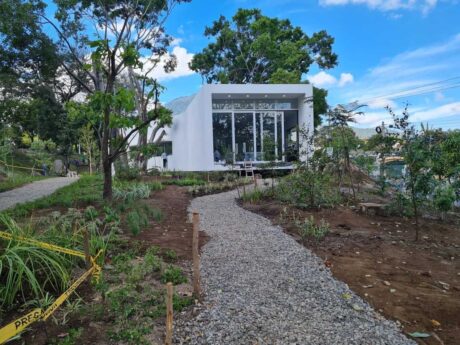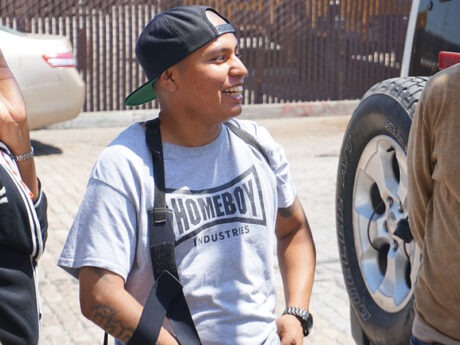Apopa, El SalvadorA group of young students stare intently into their computer screens, trying to guide a doodle robot through a puzzle. But instead of using a keyboard or other controls, the players must program their robot to execute a series of commands to complete the challenge.
It’s a fun activity, but it’s also a lesson in the basic principles of coding and computer science.
The kids are gathered at an Outreach Center in the municipality of Apopa to take part in an “Hour of Code,” part of Microsoft’s “I Can Program” initiative in Latin America. The Outreach Center is one of more than 160 across the country that are supported by the El Salvador Crime and Violence Prevention Project, which is funded by the U.S. Agency for International Development and implemented by Creative Associates International.
The event is a continuation of the project’s longstanding partnership with Microsoft; together, they’re putting new technology and skills in the hands of children and youth vulnerable to gang recruitment.
Hour of Code seeks to get youth interested in digital programming from an early age through an hour-long, hands-on tutorial, working individually or in small groups. Instead of writing out complex programming script, the tutorials let early learners click and drag simple commands, like move forward, turn left and right and jump up. The programming gets more complex as students get the hang of basic ideas.
Javier Calvo, Chief of Party of the Crime and Violence Prevention Project, said cultivating knowledge and interest in computer science can help youth build resiliency in difficult environments and connect them with new opportunities.
“In a region where many youth face difficulties with violence, unemployment and lack of educational opportunities, initiatives like the Hour of Code can stimulate creativity and collaboration and better prepare youth to enter the workforce,” he said. “We hope that this will spark a continued interest in technology as an alternative to more risky behavior that are all too present in the communities where these kids are raised.”
Bridging the digital divide
In addition to the group gathered in Apopa, nearly 50 other Outreach Centers participated in the Hour of Code remotely, and the lesson reached 450 youth ages 4 to 25. Half of them were female students, who often face additional barriers to accessing educational and work opportunities in technical fields like computer science.
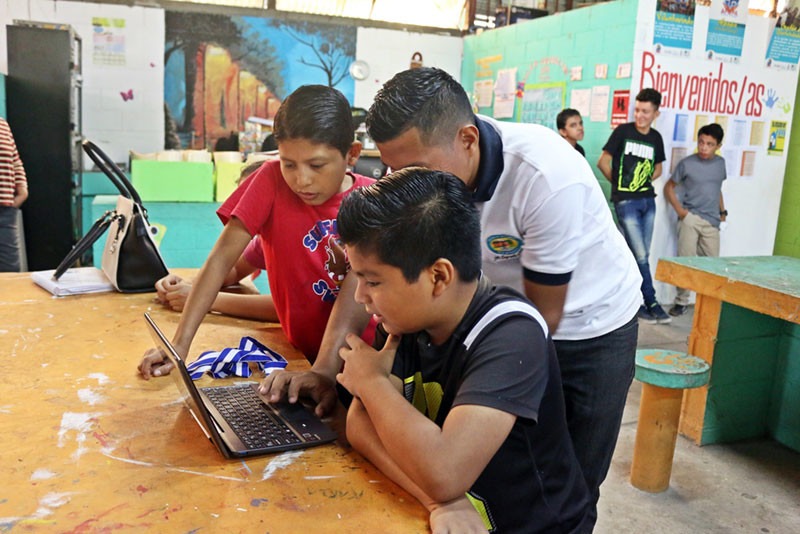
The Crime and Violence Prevention Project’s alliance with Microsoft has also allowed it to offer Microsoft Academy certifications to youth through FORMATE vocational education centers, giving at-risk youth valuable training to help them find jobs and succeed in the workforce.
Microsoft donated 14 tablets to the Apopa Outreach Center and trained coordinators of all the Outreach Centers so that they can continue teaching coding and computer science to children and youth.
Gracia Rossi, Director of Microsoft El Salvador, said its I Can Program initiative is one way in which technology can unlock the potential for youth across El Salvador and Latin America.
“Microsoft maintains a constant commitment to emphasizing the relevance of learning and the application of computer science. Through I Can Program, more youth can get involved in technological innovations that are indispensable in the development of the region,” she said. “We are thankful to USAID, which made it possible to bring technology to youth from the Outreach Centers and open doors to better work opportunities.”
